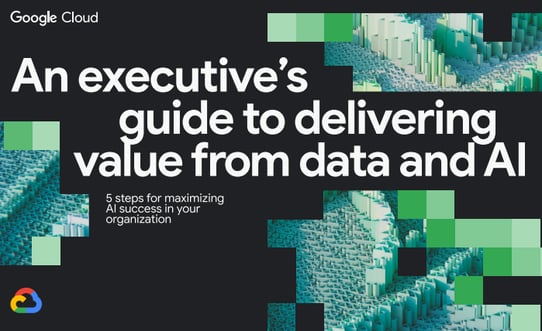The Secret to Your AI Success: It's not the model - it's the method
We are living in the golden age of AI models. Every week seems to bring a new breakthrough in how machines handle text, images, audio, and video. But beneath the hype lies a harsh reality: despite the incredible power of these tools, up to 50% of AI projects never make it from prototype to production.
Why? Because we often head to a single-point, independent AI construct without overall process and value stream plans.

We tend to think that by simply dropping the latest AI model into our business, magic will happen. But AI isn't a plug-and-play fix for broken processes or a replacement for strategy. The bottleneck for AI success has shifted from technology to execution. If you’re struggling to move an AI pilot into production, it’s likely because you’ve been focused on the what instead of the how. In short: It’s not the model—it’s the method.
Even a massive-scale issue, like the recent Cloudflare outage that affected global services, has been ascribed to a possible AI-configured setup that grew too big without proper scaling. This is a powerful example of how implementation, not the underlying technology, is the real breaking point.
This is what we discussed in our latest webinar, “It's not the model—it's the method”, and in this article, we’re breaking it down for you.
The Hammer Searching for Nails
A common trap organizations fall into is the "hammer searching for nails" syndrome. We get excited about a new AI tool (the hammer) and start swinging everywhere, hoping to find something it can solve. This rush, often driven by the fear of missing out, can quickly turn into blindly throwing money at it and hoping for the best.
This approach is backward. Success isn’t born from forcing technology into a business; it’s born from a deep understanding of the problem you need to solve. You need insight and foresight to determine the use case, the purpose, and the expected outcome.
As we often advise at Gapps: Don’t bring an excavator when a shovel will do the job.
First, understand the job you are disrupting. Look for actual friction points or blockages in your processes. Ask yourself: Are you aiming to increase horsepower (speed) or bandwidth (capacity)? If you already have an accurate, functioning system, introducing an overly complex or large AI model for minimal gain is not just inefficient, it’s actively detrimental.
We’ve seen this before in the early cloud era, where companies purchased every service available and ended up using only 20%. Let’s not repeat history with AI.
Data: The Fuel for Your Method
The next critical pillar of the method is information management. It includes both data and the organizational understanding around it. If knowledge, meaning organizational awareness and clear processes, is not present, your project will not be up to date.
I often hear a dangerous misconception: "We don't need to worry about data quality because AI agents are skillful enough to fix it." An AI agent doesn't understand your business's effect or how a change might affect customer success. Garbage in, garbage out is still a hard truth. And the responsibility of data quality, consistency, and governance remains yours.
How your systems communicate is just as critical. Many organizations rush to bring AI in, but if the enterprise architecture isn't ready and the systems and operations aren't integrated, they are heading straight into trouble.
We saw this when a company replaced a perfectly functional data engineering integration that handled messy, complex Excel price lists, with an AI platform. The AI platform was supposed to be flexible, but it failed to read the complex files. The organization was forced to run two systems, producing negative value and zero savings. The flaw was simple: the processes weren't transparent, the data handling wasn't understood, and the implementation method was fundamentally flawed.
Telling is Not Leading
Perhaps the most critical part of the method is the human element and the commitment to change. New technology requires a company-wide change management program, moving beyond adopting new tools to adopting new ways of working and generating next-generation value streams.
Professions are changing, and leadership must lead that change. It is not just a simple task delegated to IT. If leadership makes decisions without listening to data engineers or developers, or if IT adopts technology without leadership understanding what it actually means, the project is set up to fail. Telling your employees "here is a new tool" is not leading. You must manage and meet the expectations of the people you are helping—this is the key to lasting adoption.
This lesson was clear in a case where an IT department aimed to cut labor costs with AI. They brought in the tools and systems, but their headcount grew—first one CIO, then three more people were hired to manage the new complexity. By introducing AI before redesigning the work itself, they achieved the opposite of their goal: increased costs, not savings.
How to lead effectively:
- Establish an AI strategy and AI policy: Start by drafting an AI policy that includes ethics, security, and misuse prevention. This is part of your overall information and data governance.
- Ensure organization-wide knowledge: Commitment must be strong, from the top floor to the shop floor.
- Manage expectations via measuring and evaluating phases: Manage and meet the expectations of the people you are helping. That is the key to adoption.
The Methodical Path to ROI
So, how do we move from the 50% who fail to the successful few that see real ROI?
If you want to realize real-life value from AI projects, you must slow down and focus on the fundamentals.
Take your time. Plan your actions and strategy. Don't get lost in the endless sea of tools. Instead:
- Stop obsessing over the model: The "best" model changes every week. The best method, built on strategy, security, and human-centric design, is timeless.
- Start spending time on discovery: Don’t underestimate the value of discovering your actual pain points. Spend time analyzing your processes before writing a single line of code.
- Master change management: Don’t bite off too big a chunk at once. Divide your AI implementation into small, measurable steps. Make sure your team understands not just how to use the new tools, but why they are being introduced. Evaluation phases are crucial for success.
- Keep it simple and be flexible: Your commitment needs to be strong, but be prepared to adjust your plan. Start with a clear, defined use case. Prove the value, then scale. Don't force it.'
The most advanced AI models are meaningless without a robust, human-centric deployment method. At Gapps, we believe in creating smart, smooth, and secure digital environments. That foundation rests on clear strategy, quality data, and a commitment to leading people through change—not just chasing hype.
Let’s stop investing blindly in models and start investing in the methods that make them work.





